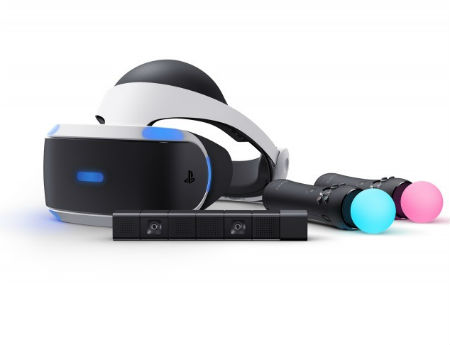CES 2017: VR Headset Unit Sales to Reach 2.5M in 2017

Las Vegas -- Indicating a slow but steady rise in an emerging format, virtual reality (VR) headsets are expected to reach 2.5 million units this year, up 79% versus 2016, while driving $660 million in revenues, a predicted year-on-year jump of 42%, the Consumer Technology Association (CTA) found in a semi-annual industry report released Tuesday.
“This area is really, really new,” Dr. Shawn DuBravac, the CTA’s chief economist, stressed here during a presentation of the group’s top tech trends heading into the show, noting that Sony’s PS VR product didn’t even go on sale until toward the end of 2016.
“[VR] Hardware sales will come slowly, surely,” he said, noting that there will also be a push toward VR-capable PCs that cost less than $1,000, and pointing to Lenovo’s announcement that it’s getting into the business of selling relatively inexpensive VR viewers and VR-ready laptops.
From a broader standpoint, the CTA, in its latest U.S. Consumer Technology Sales and Forecasts report, expects the U.S. consumer technology industry to produce $292 billion in retail revenues in 2017, and to be driven by emerging product categories such as 4K/Ultra HD, digital assistants, smart home products and wearables.
Here’s a snapshot on how CTA expects emerging CE segments to produce this year:
-Smart Home: The category, which includes products like smart thermostats, IP cameras, smart locks, lights and doorbells and smartwatches, will hit sales of 29 million units in 2017, up 63%, and bring in $3.5 billion, up 57%.
-Digital Assistant Devices: Aided by products like Amazon’s Echo and Google Home, unit sales are expected to reach 4.5 million units, up 52%, and $608 million in revenue, up 36%.
Multichannel Newsletter
The smarter way to stay on top of the multichannel video marketplace. Sign up below.
-4K/UHD TVs: 2017 shipments are expected to reach 15.6 million units, up 51%, and pump revenues of $14.6 billion, up 38%.
-Drones: Total sales will top 3.4 million units, up 40%, and, for the first time, eclipse $1 billion in revenues. And new use cases are emerging. DuBravac noted that Alarm.com and Qualcomm are working together on a home system that auto-deploys drones to provide a bird’s eye view when an alarm is tripped.
-Wearables: Driven by fitness activity trackers, the category will hit 48 million unit sales this year ,up 14%, and bring in revenues of $5.5 billion, up 3%.
Maturing technology categories (smartphones, TVs, tablets, laptops, and desktops) will contribute almost half of total industry revenue (48%). Among them, LCD TVs are expected to see a 2% decline in in unit volume (39 million units), while tablet sales drop 5%, and smartphones tick up 2%. Laptops will hold steady at 27 million units, with desktops dipping 7%.
During his talk, DuBravac emphasized the rise of voice-controlled computing and AI.
While the word error rate of voice recognition technologies were near 100% in 1995, it improved to about 23% in 2013, and will drop down to “human parity” – or about 5% to 6% -- in 2017, he said.
“The next computer interface is voice” as the technology hits an inflection point and makes the leap from “theoretical to practical,” DuBravac said, noting that he expects to see 700 new apps for Amazon Alexa introduced here over the next four days.
